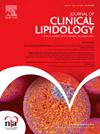高危患者血脂检测率和治疗目标完成情况的真实世界评估:2018年AHA/ACC实践指南发布后
摘要
背景/简介2018 AHA/ACC 临床实践指南为动脉粥样硬化性心血管疾病(ASCVD)和/或 2 型糖尿病(T2DM)患者的治疗选择和降低低密度脂蛋白胆固醇(LDL-C)设定了标准。Objective/Purpose To assess the rates of lipid testing among patients with ASCVD and/or T2DM pre and post initiating statins or proprotein convertase subtilisin/kexin type 9 inhibitors (PCSK9i) and the extent of LDL-C target attainment in 12 months after initiated after GDT versus non-GDT post released of practice guidelines.目标/目的评估他汀类药物或9型丙脯氨酸转化酶(PCSK9i)抑制剂使用前后ASCVD和/或T2DM患者的血脂检测率,以及使用GDT与未使用GDT后12个月内LDL-C目标的实现程度。方法从医疗保健综合研究数据库中找出2019年1月1日至2020年12月31日期间开始服用他汀类药物或PCSK9i的成人,这些成人之前有证据表明患有ASCVD和/或T2DM,并在12个月前和12个月后的指数药房索赔日期(他汀类药物或PCSK9i)加入了医疗保险。根据程序代码或可用的实验室结果,研究了血脂检测模式和 LDL-C 目标达标率(70 毫克/分升)。GDT的定义是:有ASCVD的患者开始服用高强度他汀类药物;无ASCVD的T2DM患者开始服用中度或高强度他汀类药物;有ASCVD的患者在高强度他汀类药物基础上加用PCSK9i;在12个月的随访期间持续服用高强度他汀类药物,同时持续服用PCSK9i。结果共纳入了 71581 名患有 ASCVD/T2DM 的他汀类药物入选者和 3038 名患有 ASCVD 的 PCSK9i 入选者(平均年龄:61-65 岁;男性:55-60%)。在他汀类药物入选者和曾患 ASCVD 的 PCSK9i 入选者中,分别有 72% 和 79% 的人在 12 个月的基线期间进行了血脂检测,69% 和 75% 的人在 12 个月的随访期间进行了血脂检测。在至少进行过一次有效低密度脂蛋白胆固醇测量的患者子集中,启动后 12 个月的低密度脂蛋白胆固醇目标达标率如下:曾患 ASCVD 的他汀类药物 GDT 启动者的达标率为 53%,而非 GDT 为 35%;曾患 T2DM 但未患 ASCVD 的他汀类药物 GDT 启动者的达标率为 35%,而非 GDT 为 16%;曾患 ASCVD 的他汀类药物 GDT PCSK9i 启动者的达标率为 65%,而非 GDT 为 53%;曾患 ASCVD 并持续服用高强度他汀类药物同时持续服用 PCSK9i 的患者的达标率为 80%,而非持续服用 PCSK9i/ 司他汀的患者的达标率为 64%。根据2018年AHA/ACC指南(即GDT)进行血脂检测的高危患者的LDL-C达标率与非GDT相比略有提高。提高血脂检测率的干预措施可增加根据指南进行治疗调整的机会,并更好地实现低密度脂蛋白胆固醇目标,帮助降低心血管事件风险。Background/Synopsis
The 2018 AHA/ACC clinical practice guidelines set standards for treatment selection and low-density lipoprotein cholesterol (LDL-C) lowering among patients with atherosclerotic cardiovascular disease (ASCVD) and/or type 2 diabetes mellitus (T2DM). However, real-world evidence on rates of lipid testing and LDL-C target attainment following guideline directed treatment (GDT) post-release of practice guidelines is limited.
Objective/Purpose
To assess the rates of lipid testing among patients with ASCVD and/or T2DM pre and post initiating statins or proprotein convertase subtilisin/kexin type 9 inhibitors (PCSK9i) and the extent of LDL-C target attainment in 12 months post-initiation after GDT versus non-GDT post-release of practice guidelines.
Methods
Adults initiating statins or PCSK9i between 01/01/2019 and 12/31/2020 with prior evidence of ASCVD and/or T2DM, and health plan enrollment for 12-month pre- and post-index pharmacy claim date (either statin or PCSK9i) were identified from the Healthcare Integrated Research Database. Lipid testing patterns and LDL-C target attainment rates (<70mg/dL) based on procedure codes or available lab results were examined. GDT was defined as high-intensity statin initiation in patients with ASCVD, moderate- or high-intensity statin initiation in patients with T2DM without ASCVD, PCSK9i in patients with ASCVD added to high-intensity statin and sustained high-intensity statin while persistent on PCSK9i during the 12 months follow-up period. Descriptive statistics were reported, and no statistical testing was performed.
Results
In total, 71,581 statin initiators with ASCVD/T2DM, and 3,038 PCSK9i initiators with ASCVD were included (mean age: 61-65 years; males: 55-60%). Among statin initiators and PCSK9i initiators with prior ASCVD, 72% and 79% had lipid testing during 12-month baseline, and 69% and 75% during 12-month follow-up, respectively. LDL-C target attainment rates during 12-month post-initiation among a subset of patients with at least one valid LDL-C measurement is as follows: 53% in GDT statin initiators with prior ASCVD versus 35% for non-GDT, 35% in GDT statin initiators with prior T2DM without ASCVD versus 16% for non-GDT, 65% among GDT PCSK9i initiators with prior ASCVD versus 53% for non-GDT, and 80% among patients with prior ASCVD with sustained high-intensity statin while persistent on PCSK9i versus 64% for non-persistent PCSK9i/statin.
Conclusions
Lipid testing rates were moderate. LDL-C target attainment in high-risk patients with lipid testing treated per 2018 AHA/ACC guidelines (i.e., GDT) were modestly improved versus non-GDT. Interventions to improve lipid testing rate may increase opportunities for treatment modification based on guidelines and better LDL-C target attainment to help reduce the risk of cardiovascular events.

 求助内容:
求助内容: 应助结果提醒方式:
应助结果提醒方式:


